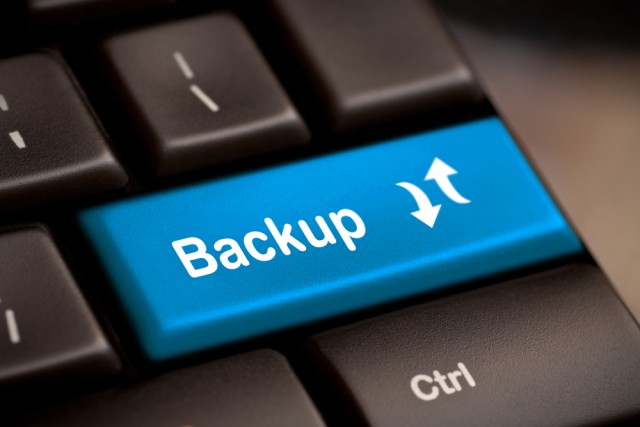Keeping a clean backup environment when chaos abounds

Around the globe, IT directors are experiencing a common problem. What is that problem, you ask? The fact of the matter is backup environments worldwide are becoming increasingly challenging to manage. You might be asking yourself how this assertion could possibly be accurate, especially with the sudden boost in technology. Truth be told, the increase in technology is part of the problem.
Many directors in the IT world are finding themselves with less support, but are not asked to do any less. Things can quickly get chaotic when staff is not replaced, IT budgets shrink, service-level expectations continue to rise, and ROI-based business cases are created for purchased hardware even though storages spaces are completely maxed out. Sounds like a mess, right?
Despite the appearance of being clean and organized, many backup environments are a complete disaster. It may be hard to imagine, but at the center of the chaos is sometimes the clients. Let’s not forget that they are also at the heart of a backup environment! However, like any good thing, boundaries have to exist. Let’s take a closer look at what this last sentence means with the use of a more concrete example. Backup environments can lose order quite quickly when the clients in your network are overusing storage space or performing unnecessary processing cycles. Another example is when clients store repeated data that they haven’t laid eyes on in a very long time. Here is the main kicker...some clients run full backups, when in reality, they should only be running and storing partial backups. These scenarios create recipes for making a royal mess out of the backup sphere!
Those within the world of IT might prefer to bury their heads in the sand when these things are considered, but the truth is, all directors and administrators are painfully aware of these issues. The major rub is in trying to figure out what clients are causing the chaos. Imagine the difficulty of trying to pin down this information when various locations are spanned, not to mention, the existence of a variety of data protection systems. What needs to happen is the movement of client data into long-term storage spaces. The reason for this is because space needs to be made available for your current storage clients. To clear space, the clients with problematic data and practices must be identified, but how can one find out this information?
For starters, see what the ratio is between backed up data and the amount of data that is being stored on both the primary and backup drives. Most often, a ratio of 1:2 will exist for the majority of companies. However, when you see those clients that have gone over this ratio, you must focus on THEM. Anything higher than the above ratio is generally caused by full backups and several saved versions. Many reading this might be starting to sigh thinking of the time this will take to pinpoint these clients. You are right...it will take time and patience! However, if you find yourself with more than enough of either of those things, you can proceed to streamline your search by looking over the client logs to see what time certain data was looked at. This way, you will have clarity as to who should be utilizing the long-term storage option. Sometimes, these storage "hogs" will go unnoticed, because of all the effort it takes to find them. However, modern day departments have the advantage of products which can help IT teams create reports and quickly find the above information without needing to do it manually!
There is more to the proverbial puzzle than simply pinpointing these clients, however. After figuring out who the clients are, administrators need to find them a proper home. It might make your head spin to hear of situations where 100GB databases are using terabytes of storage space. These wasteful storage situations should not be happening, but if this is something you are seeing in your backup environment, don’t worry. Here are a few steps you can take to ensure a clean backup environment in the midst of chaos.
- Only perform backups on files that have changed. Leveraging incremental backups will help you verify changes. If you do this, you will not be backing up several copies of the same data.
- Improve your deduplication processes. In doing so, your backup sphere will be protected from having multiple copies of data stored all over. Copies aren’t inherently bad, but nobody benefits from have loads of the same versions of data spread across different locations. As a matter of fact, several versions of stored data can contribute to the chaos.
- In certain situations, it is better to retain data from one backup weekly, rather than daily. Before you proceed to make any changes though, verify that this is allowed by looking over your compliance requirements.
If you diligently consider the above steps, you will be able to see what clients are taking up the valuable storage space. Following through in these ways will be a great benefit to all parties involved. Your clients and your CIO will likely thank you because everyone will be getting the most out of the backup environment. So, take a sigh of relief. If you are diligent to use this information as a guide, you will be well on your way to a clean backup environment...even in the midst of chaos!
Photo credit scyther5 / Shutterstock
 Amedee Potier joined Rocket Software in 2003 and is currently Senior Director of R&D, where he oversees several Rocket products in the Data Protection space. His focus is on solutions for data protection and management in heterogeneous multi-vendor and multi-platform environments.
Amedee Potier joined Rocket Software in 2003 and is currently Senior Director of R&D, where he oversees several Rocket products in the Data Protection space. His focus is on solutions for data protection and management in heterogeneous multi-vendor and multi-platform environments.